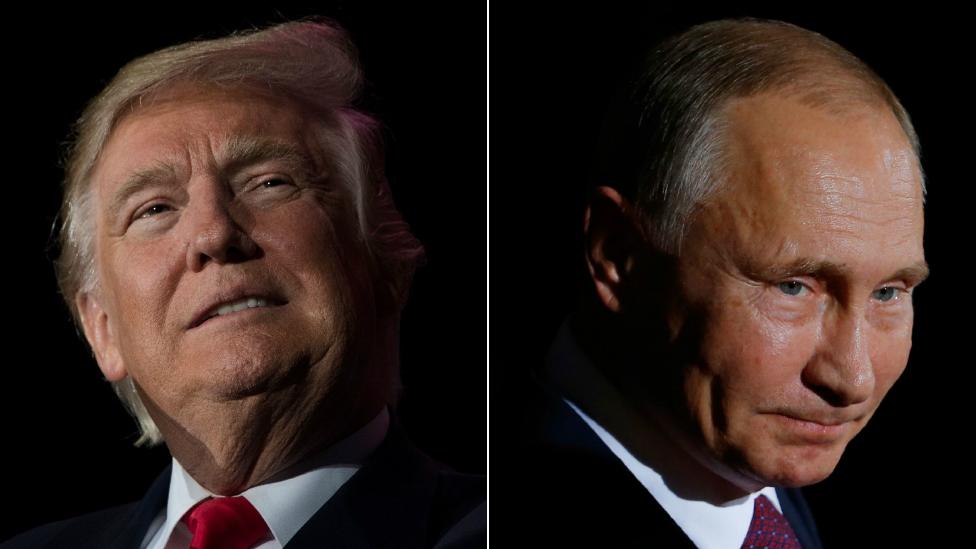In pictures: A history of US-Russian summits
- Published
When US President Joe Biden meets his Russian counterpart Vladimir Putin in Geneva, Switzerland on Wednesday, their names will enter into the pages of a long history of talks between leaders of the two powers.
Here we look back at some of the summits that preceded this one.
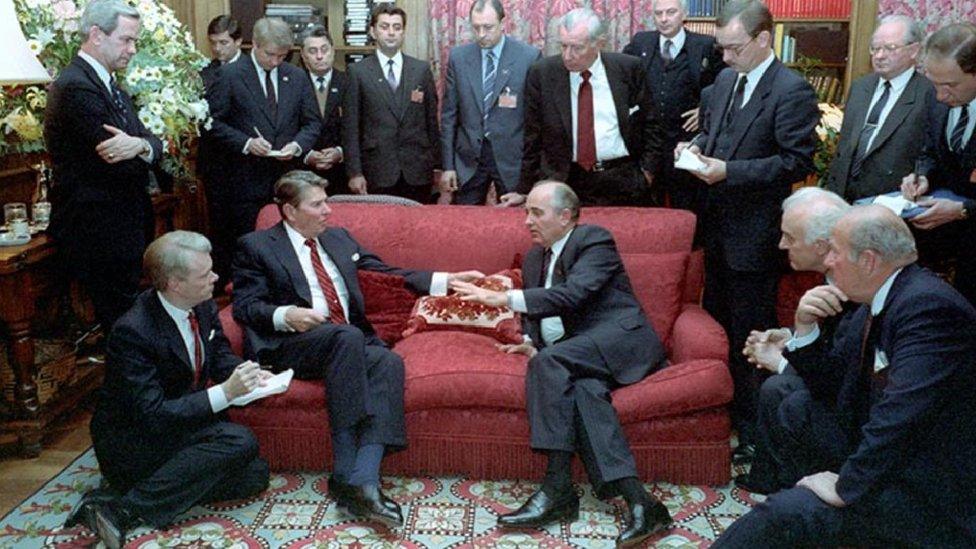
A meeting of US President Ronald Reagan and Soviet leader Mikhail Gorbachev in Geneva in 1985 led to a thawing of relations
Khrushchev gets the better of Kennedy
President John F Kennedy met Soviet Premier Nikita Khrushchev in Vienna in 1961. The talks were dominated by the crisis in Berlin and control over the divided city. For Kennedy, it was a bruising, unexpectedly hostile encounter at which he felt outmatched by his Soviet counterpart.
"Worst thing in my life," the president told a New York Times reporter after the talks. "He savaged me." The Berlin Wall went up in the months after the talks and the following year the two superpowers locked horns over the Cuban missile crisis.
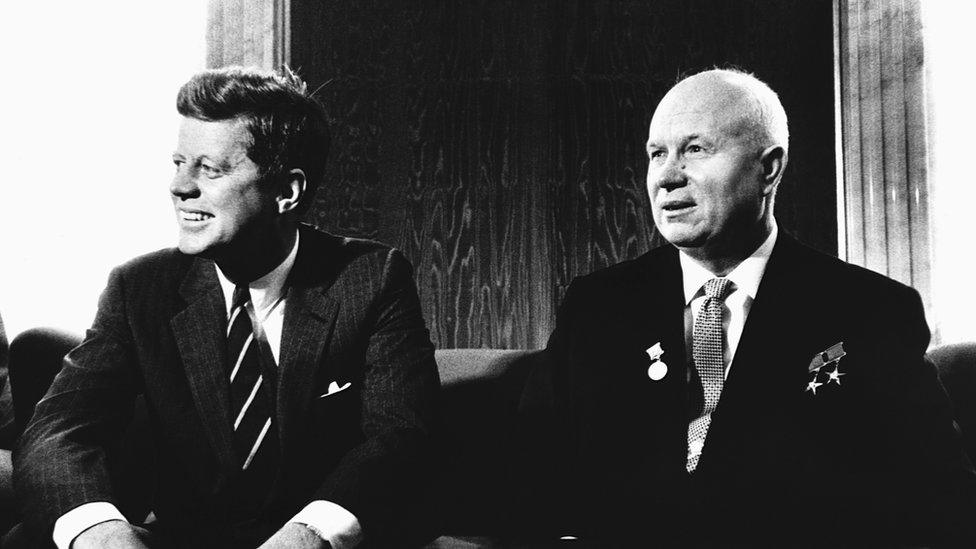
John F Kennedy was furious with himself after his meeting with Soviet leader Nikita Khrushchev
Nixon's nuclear accords
In May 1972, President Richard Nixon and Soviet leader Leonid Brezhnev met in Moscow for their first summit, which produced what appeared to be a good working relationship between the two leaders and a historic arms treaty setting limits to the rapidly expanding nuclear arsenals of both powers.
Nixon invited Brezhnev to Washington the following year, and the pair signed nuclear arms control treaties at three successive summits.
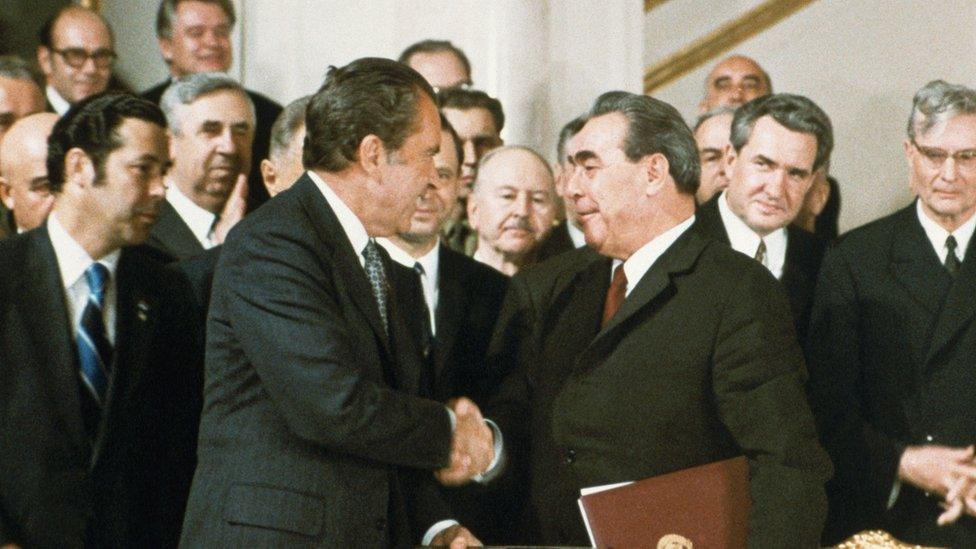
Richard Nixon met Leonid Brezhnev, who was the Soviet premier for 18 years
Brezhnev warms to Ford
In November 1974, Nixon's successor Gerald Ford met Brezhnev for the first time in the Russian city of Vladivostok. Relations between the pair were warm despite the extreme cold. They discussed American football and football which they had respectively played as younger men, and joked together.
Ford had come wearing a wolfskin coat from Alaska. "I'm a sheep in wolf's clothing," he joked to reporters. "I told the first secretary. I'm going to get him one." Brezhnev then tried on the coat and modelled it for photographers.
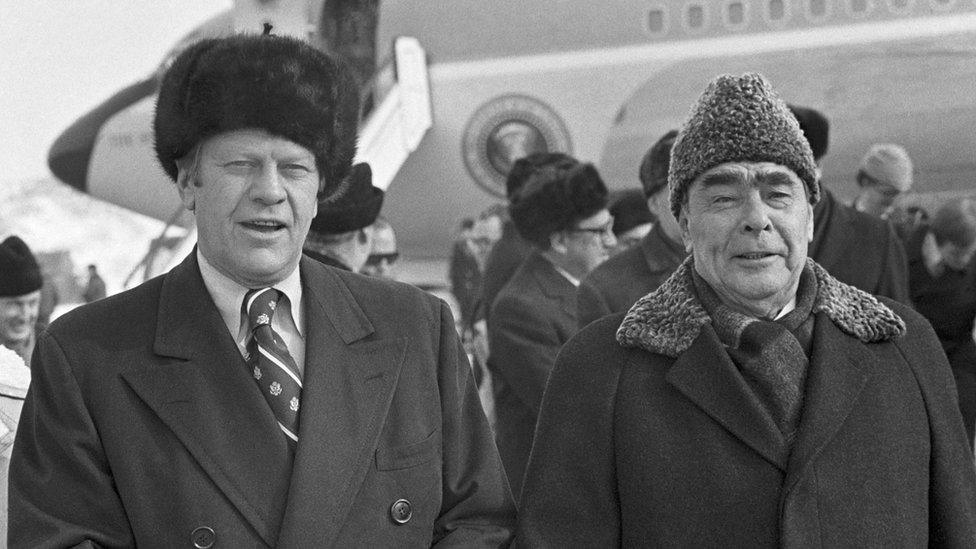
Gerald Ford with Brezhnev, who often kept to the traditional socialist greeting of kisses
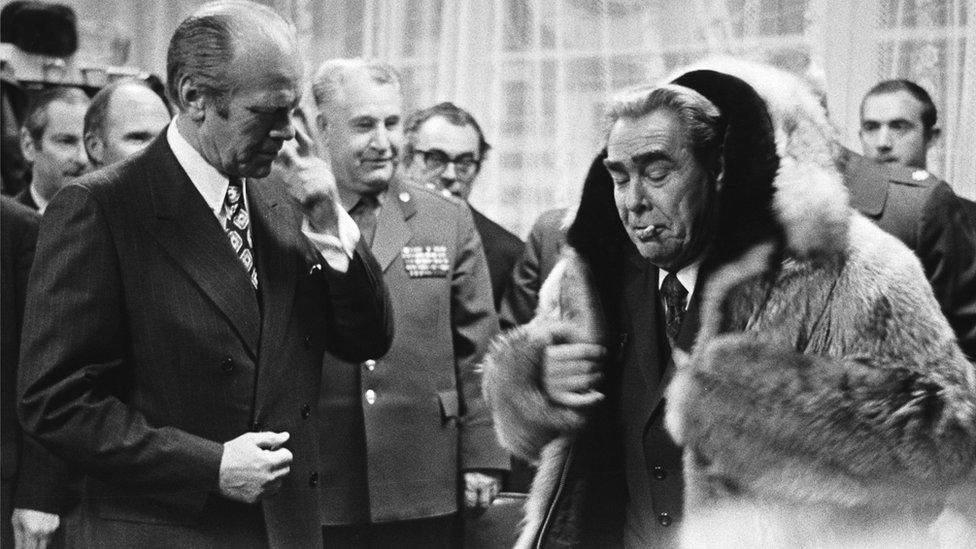
Brezhnev tries on Ford's Alaskan wolfskin coat for the cameras
The pair met again the following year in Helsinki - the first of several US-Russian summits that would take place in the Finnish capital - for the Conference on Security and Co-operation in Europe.
Leaders from 35 nations signed the Helsinki accords - a declaration which called for respect for human rights and for the inviolability of European borders. It was among the most significant moments of the Cold War, but Ford faced criticism at home for what was seen by some as a concession to the Soviets and a legitimisation of Soviet oppression in Eastern Europe.
Jan Lodal, a member of Ford's policy team at the summit, later wrote in the Atlantic, external that Brezhnev had secretly told Ford that the Soviets supported his re-election and would "do everything we can to make that happen". It would turn out to be a strange foreshadowing of the build up to another US presidential election, 41 years later.
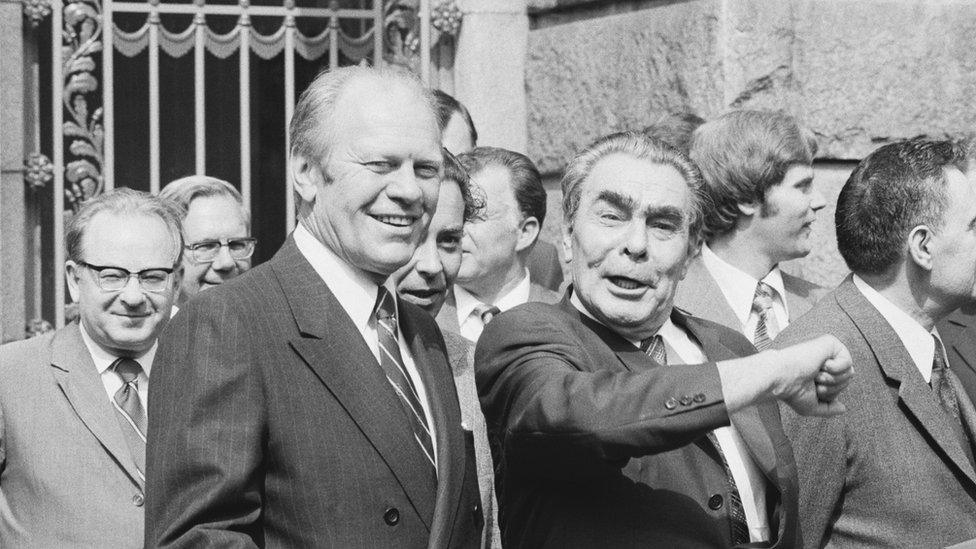
Brezhnev (r) had a "Slavic love of physical contact", including bear hugs, US memos for Ford (l) revealed
A 'big deal' on nuclear weapons
Towards the end of the Cold War, in December 1987, President Ronald Reagan and Soviet leader Mikhail Gorbachev met in Washington DC, where the two nations once again engaged on the issue of controlling nuclear arms stockpiles and testing.
They signed the INF Treaty - an accord banning intermediate-range nuclear missiles which led to the destruction of 2,692 missiles by 1991.

General Secretary Gorbachev and President Reagan are widely credited for ending the Cold War era
Then in 2017, shortly before the INF Treaty's 30-year anniversary, President Donald Trump accused Russian leader Vladimir Putin of violating the pact by testing and deploying a ground-launched intermediate-range cruise missile, calling it a "big deal".
Moscow responded by accusing the US of violating the treaty.
Gorbachev and Bush deal a knockout blow
President George HW Bush met Mr Gorbachev seven times. By the time they met for their third summit, in Helsinki in September 1990, they had established a warm working relationship based on hours of discussions, often without advisers.
Mr Bush was hoping to shore up support from Mr Gorbachev in dealing with aggression by the Iraqi leader Saddam Hussein, who had weeks earlier invaded Kuwait.
Mr Gorbachev arrived at the summit with a gift for Mr Bush - a framed cartoon depicting the two leaders as boxers, both standing in a victory stance, having knocked out a prone figure labelled "Cold War" in Russian.
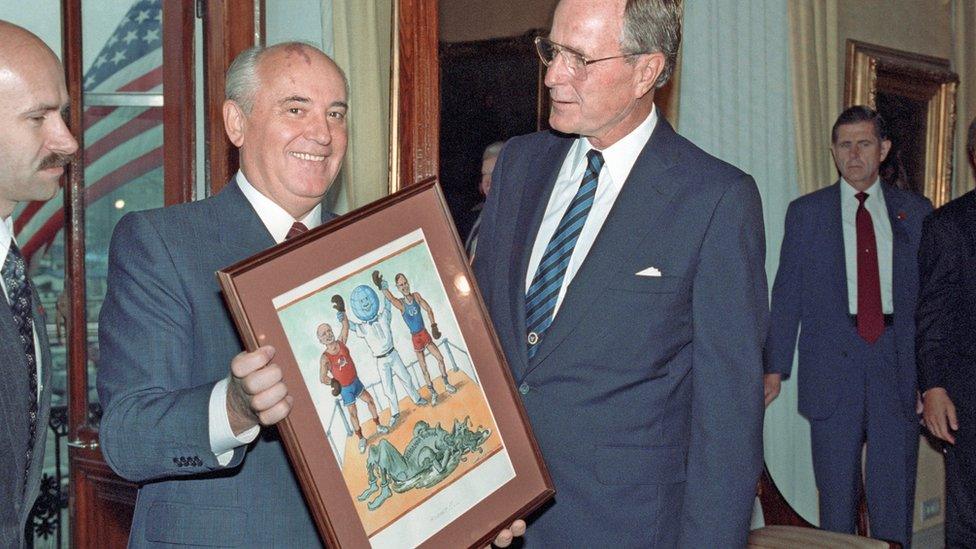
Mr Gorbachev presents Mr Bush with a cartoon to commemorate the end of the Cold War

A pivotal moment in US-Russia relations
President Bill Clinton met Russian leader Boris Yeltsin in Helsinki in March 1997 for talks viewed as some of the most crucial between the US and Russia since the end of the Cold War. Relations had been strained by an eastward expansion of Nato to include former Soviet bloc nations.
Yeltsin made it clear at the summit that he objected to Nato enlargement, but agreed to negotiate a pact with the alliance. The pair also agreed to a sharp reduction in their respective nuclear arsenals.
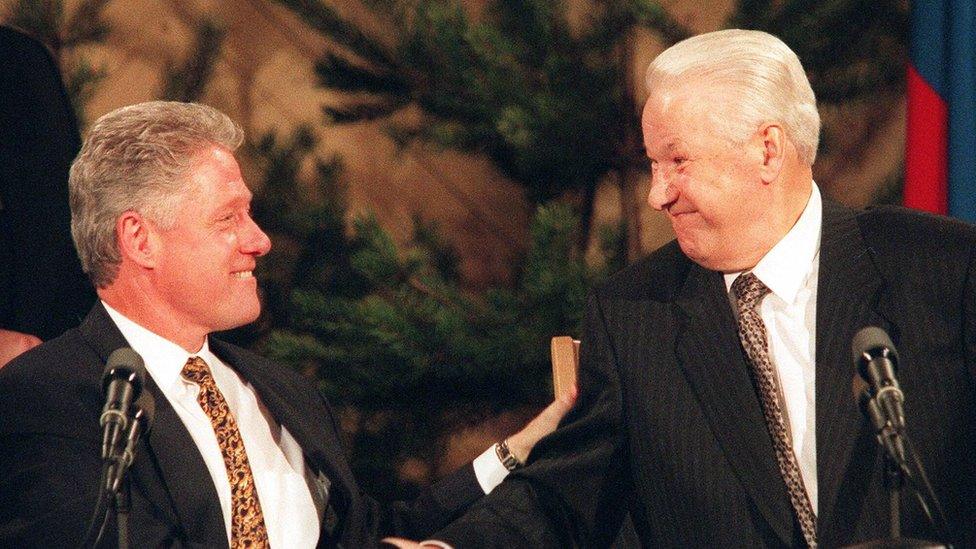
Bill Clinton doubled over with laughter in a press conference when Boris Yeltsin called the US media "a disaster"
A new 'tsar' takes the throne
US-Russia relations steadily worsened under the leadership of Vladimir Putin, a former Russian intelligence official who became president in 2000. George W Bush, who became US president a year later, attempted to bring Mr Putin on side but the pair's relationship slowly soured over the eight years Mr Bush was in office.
"I think Putin is not a democrat anymore," he told the visiting prime minister of Slovenia in 2006. "He's a tsar. I think we've lost him."
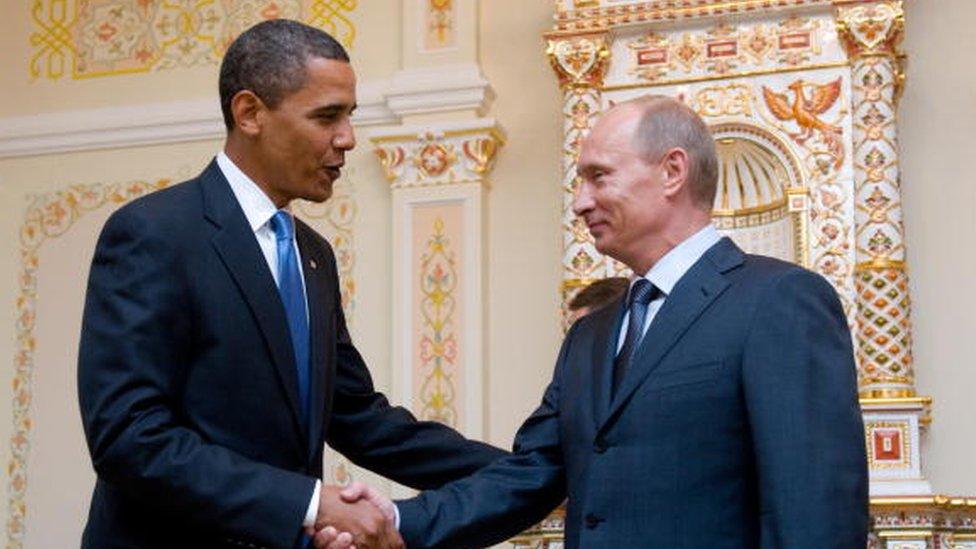
President Barack Obama noted the "extraordinary work" Mr Putin had done for Russia
When Barack Obama became US president in 2009, he tried a new strategy of going around Mr Putin. The Russian leader had stepped aside to comply with Russia's two-term presidential limit, installing Dmitry Medvedev in his place.
Mr Obama did travel to Moscow to meet Mr Putin in 2009, and again at a Mexican G20 summit in 2012. On the second occasion, Mr Putin showed up late for the meeting, which focused on the prospects of peace settlement in Syria.
But President Obama attempted to develop a relationship with Mr Medvedev.
Obama presses the reset button
In 2009, Mr Obama dispatched his Secretary of State Hillary Clinton to meet her Russian counterpart Sergei Lavrov with the goal of re-setting US-Russia relations. She even went armed with a toy button labelled "reset" in English and Russian, only for it to be revealed that the Russian word they'd used in fact meant "overload".
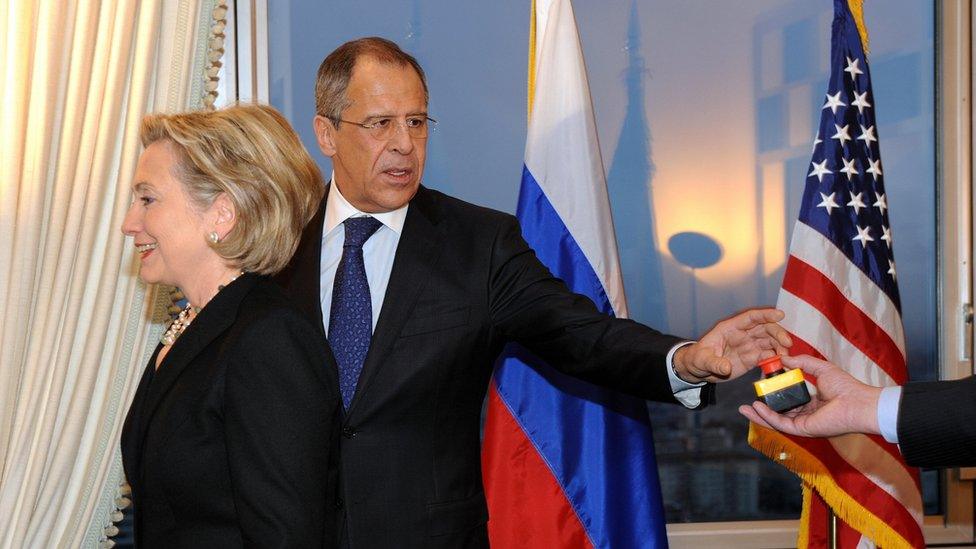
Don't forget the reset button
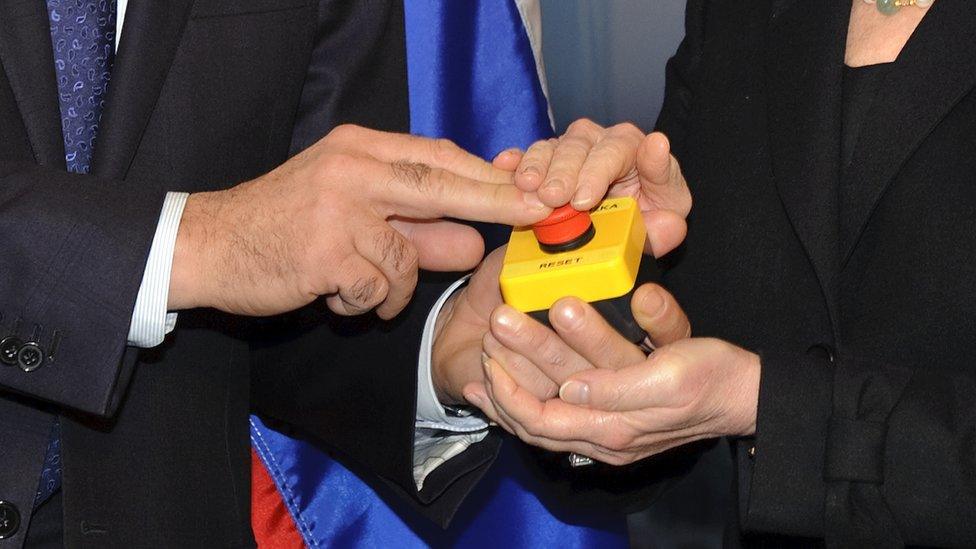
The reset was about as effective as the toy button
Russia later pointedly refused US demands for them to extradite the whistleblower Edward Snowden. Mr Obama cancelled a trip to Moscow and distanced himself from Mr Putin.
Then in 2014 Russia annexed Crimea, breaking for the first time the Helsinki Accord signed by Ford and Brezhnev in 1975 and heaping international opprobrium and sanctions on itself. President Obama criticised Mr Putin, but made it clear he had no intention of entering into any kind of conflict.
"This is not another cold war that we're entering into," he said. "Now is not the time for bluster … There are no easy answers, no military solution."
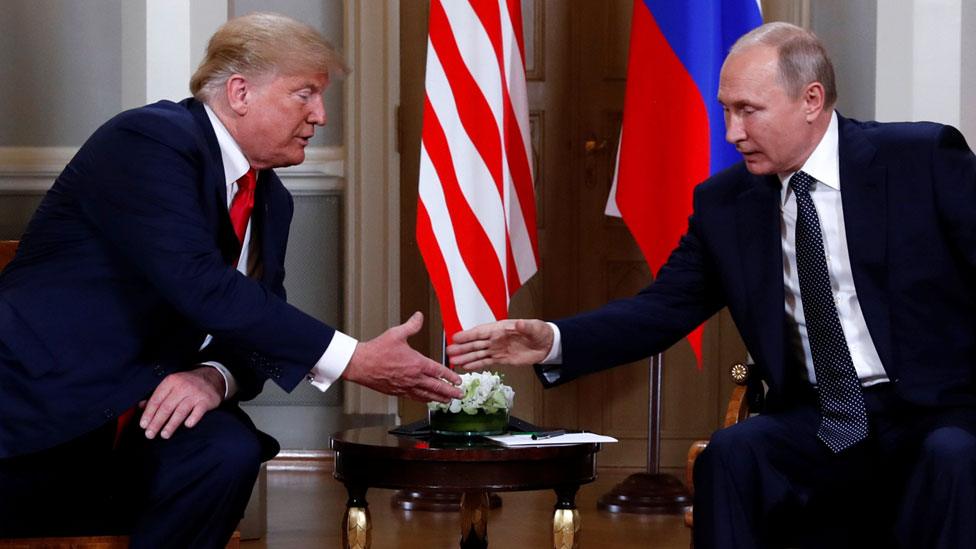
The two leaders met with only translators as witnesses
Trump plays ball with Putin
When Mr Trump became president in 2016, the US once again sought a reset.
A 16 July summit in the Finnish capital, Helsinki, was arranged with US-Russia relations under a heavy raincloud. US intelligence agencies unanimously concluded that Russia conducted a cyber operation to influence the outcome of the US presidential election in 2016.
A special counsel was tasked with investigating the alleged Russian interference and if Mr Trump's campaign was complicit. A report released by the special counsel in April 2019 concluded that Mr Trump's campaign team did not collude with Russia to influence the election.
In a news conference, President Trump defended Russia over the claims. He contradicted US intelligence agencies by suggesting Russia had no reason to meddle in the election.
Trump: "There was nobody to collude with"
Mr Trump also blamed poor relations with Russia on past US administrations rather than actions taken by President Putin's government.
In the wake of the summit, Mr Trump faced a barrage of criticism from both sides of the US political divide for his defence of Russia.
In the end, Mr Putin said the ball was in Mr Trump's court, and gifted the US president a World Cup football.
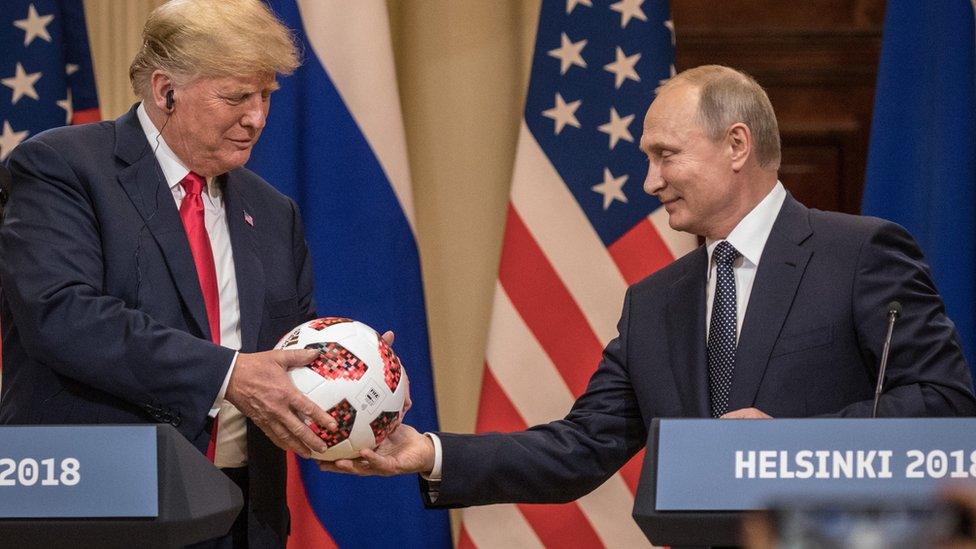
President Trump said he would give the football to his 12-year-old son, Barron
.
- Published16 July 2018
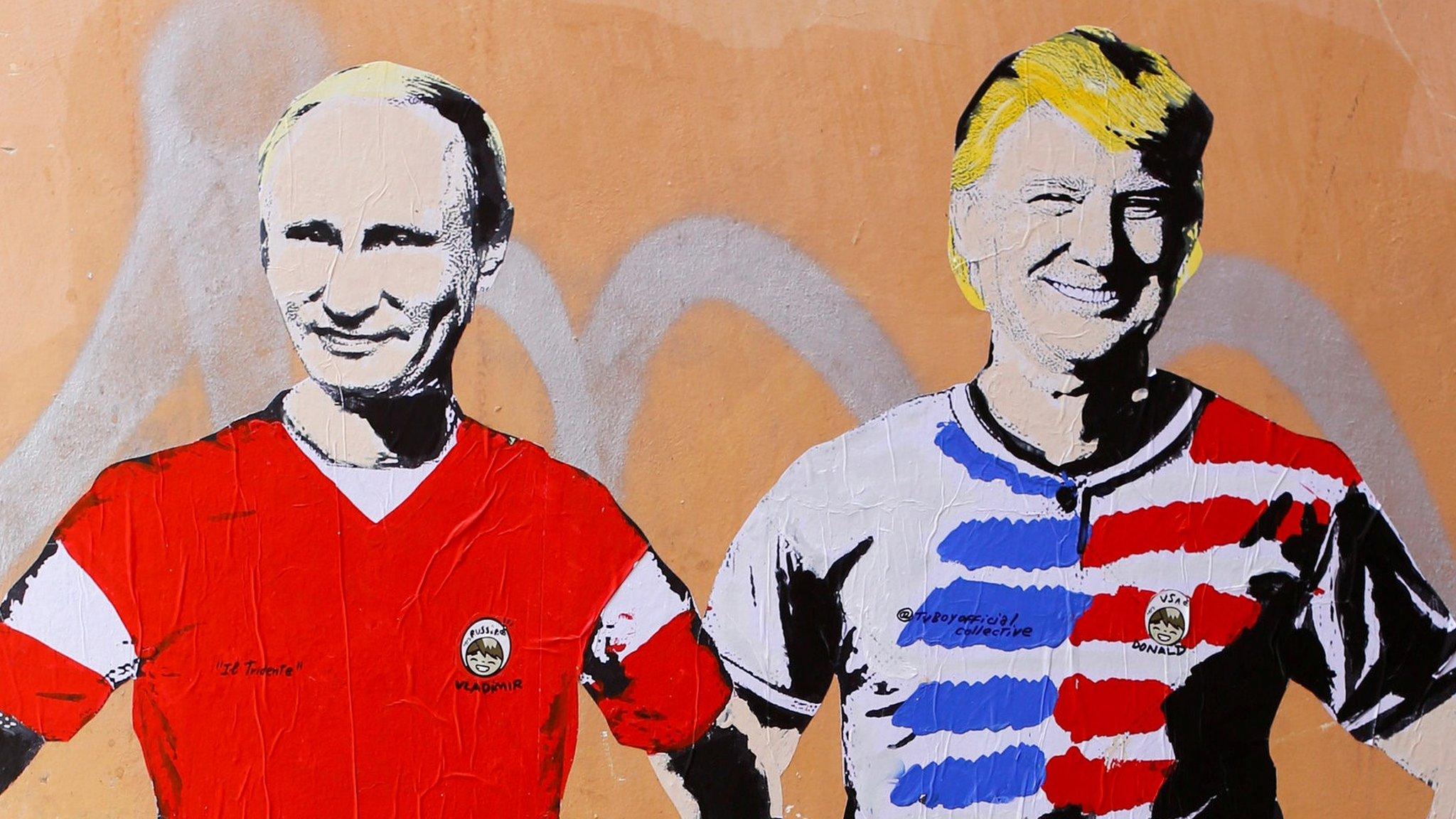
- Published15 July 2018
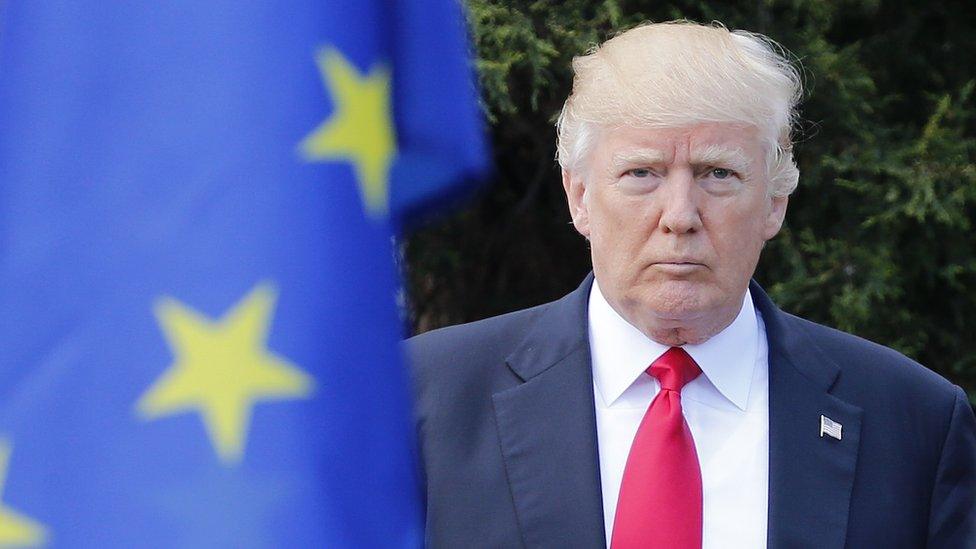
- Published13 July 2018

- Published13 July 2018
- Published2 May 2018
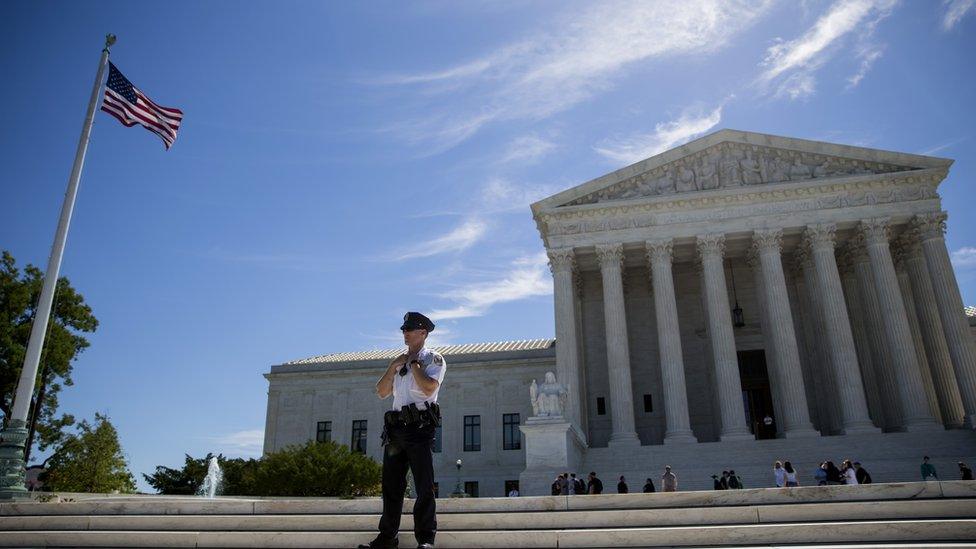
- Published24 July 2019
